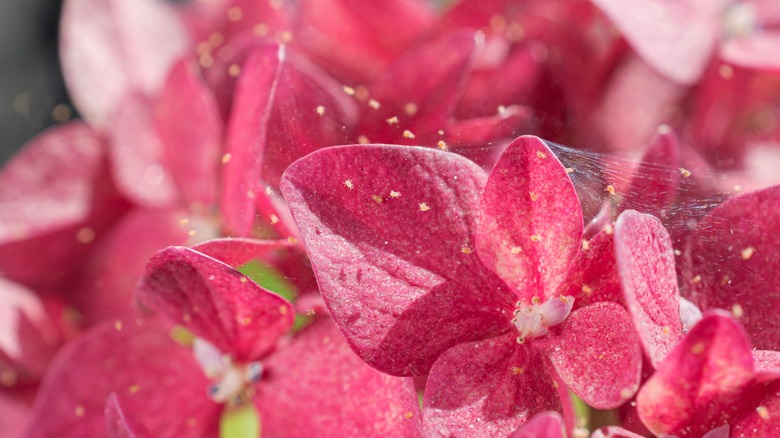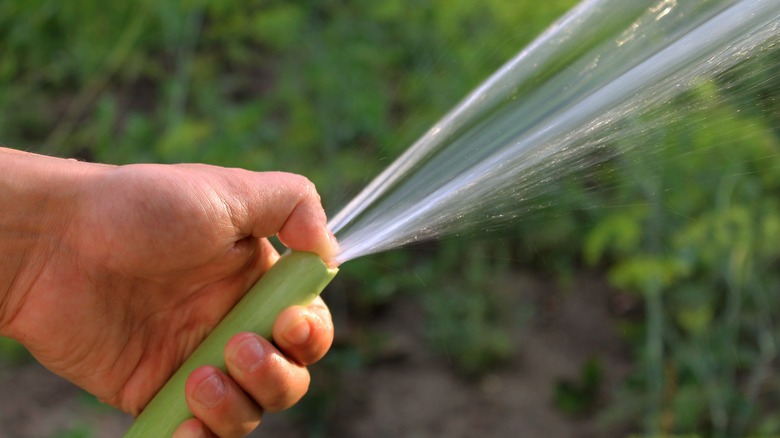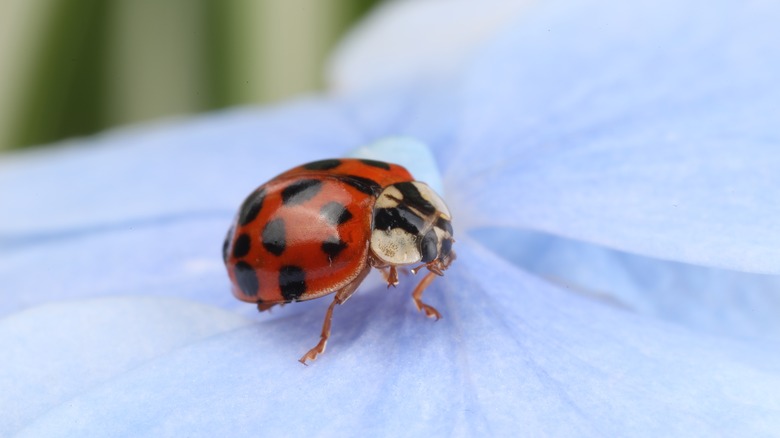The Gardening Tip That Keeps Spider Mites From Destroying Hydrangeas
Hydrangeas are quite possibly one of the most exciting flowers to plant in your garden since they grow big, bold blooms in various colors and sizes. This flowering shrub can quite easily liven up the perimeter of a home or a walkway and often denotes a visual welcome to spring and summer. However, they can also easily become victim to spider mites. Yet there is a simple gardening tip that can help rid them from your hydrangeas and give you time to ensure they won't come back, and it all starts with a good squirt from a hose.
Spider mites are tiny eight-legged arachnids that consume plant cells to survive by extracting the contents of leaves. Though you may not be able to see them, you will likely notice yellow or white specks on the undersides of leaves, or leaves may look bronzed. Another key sign of a spider mite infestation is when there is webbing on the leaves. When you discover any of these findings, that is when it's time to act to prevent further damage. Left untreated, spider mites are one of the pests that will destroy your hydrangeas. Though there are many insecticides that you can use, your first line of defense can be a good hosing down.
Turn your hose on spider mites
Spider mites thrive in dry, dusty, and warm environments, so delivering a soaking splash from a hose will physically remove them from the hydrangea leaves while also helping create an unfavorable environment for them. These pests tend to gather in the underside of leaves so that is where you want to aim. Use a gentle but firm spray to dislodge as many mites and webs as possible. However, be careful not to drown your hydrangea's soil at the same time, so try to make the water blast fast and with enough force to do the job without the pressure so high that it can damage your plant.
Despite the water treatment, once your hydrangea is dry again, spider mites may come back. It helps to always make sure your plant is watered regularly, and never allow it to get dry or dusty. The best method for watering hydrangeas is to do it at least two times a week. For newly planted hydrangeas, aim to water it three times a week. Avoid letting the soil get soggy and just water as needed. You can repeat the hose spray every couple of weeks.
Beyond hosing down spider mites
Beyond hosing them off, another natural way to repel spider mites is to encourage beneficial insects to come to your yard by avoiding pesticides and planting bright, pollen-rich plants like marigolds, fennel, and dill. Ladybugs, lacewings, and pirate bugs are natural predators of spider mites.
The best way to deal with spider mites is to prevent them from getting to your plants in the first place. Ensure your hydrangeas are healthy and well-watered since pests are likely to attack stressed plants. It also helps to regularly inspect your hydrangeas for signs of spider mites. Early detection allows you to take action before the infestation gets out of hand.
However, keep in mind that, though a hose can help when you first notice spider mites, it might not be enough for a severe infestation. A stronger approach is to use insecticidal soap and sprays. Another organic option is neem oil, a natural pesticide derived from the neem tree that can kill spider mites on contact and can also be used every week.


